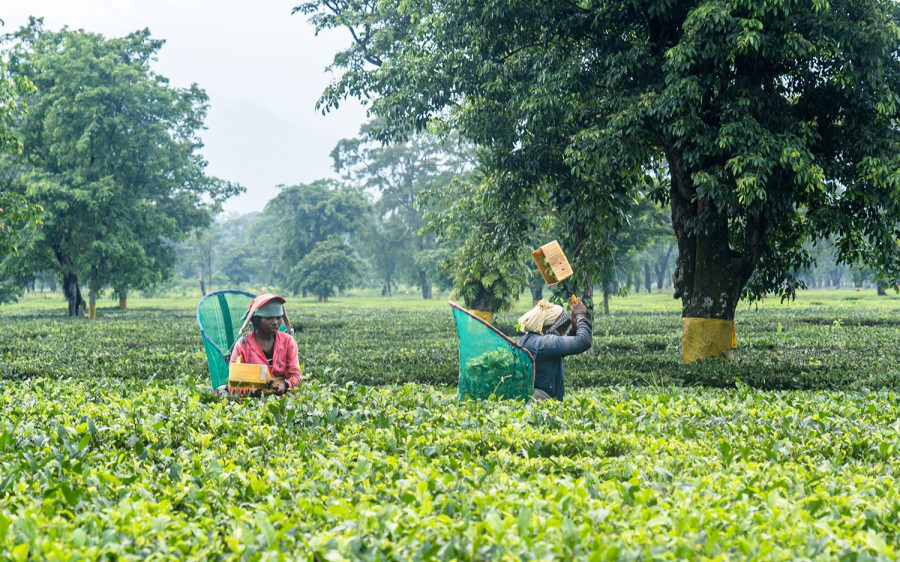
SATV Kathmandu Oct 31: The export share of Nepal’s high-value products listed under the Nepal Trade Integration Strategy (NTIS) 2023 declined by 2 percent in the first quarter of the current fiscal year despite an overall export boom.
The surge in exports was largely driven by edible oil, mainly soybean oil—a product Nepal does not produce commercially but imports and re-exports to India under the South Asian Free Trade Area (SAFTA) privilege.
According to the Department of Customs, the share of NTIS-listed products in total trade stood at 32.63 percent, down by 1.98 percentage points in the review period.
Nepal’s total exports in the first three months soared by 89.64 percent to Rs72.78 billion.
However, exports of NTIS products amounted to Rs23.75 billion, showing no significant growth in goods with real potential.
The government implemented the revised NTIS 2023 in July, replacing NTIS 2016, to boost exports and support Nepal’s graduation from the least developed country category by 2026.
In the review period, Nepal exported 198,282 tonnes of edible oil worth Rs34.75 billion. Soybean oil exports alone surged 3,164 percent to Rs30.69 billion, contributing 42.2 percent of total exports.
Experts attribute this dramatic rise to traders exploiting tariff loopholes in India—a recurring pattern in Nepal’s trade.
“The growth in export does not give a real picture as the export is bloated only due to edible oil that the country does not produce. The export performance of potential commodities is weakening,” said trade expert Purushottam Ojha.
“When many countries are taking tariff measures, Nepal has not done anything on trade improvement. As investors’ confidence has lowered, it will affect production and export,” he said.
Ojha added that the recent Gen Z movement and political instability have started to affect domestic production and could widen the trade deficit due to uncertain policies.
Exports of carpets, readymade garments, tea, iron and steel, Nepali paper, rosin and resin, and ginger all declined during the review period.
Shipment of woollen carpets fell by 9.76 percent to Rs2.57 billion. The country exported 93,438 square metres of carpet, contributing 3.5 percent to total exports.
Readymade garment exports declined by 10.22 percent to Rs2.51 billion.
Tea shipments dropped by 40.57 percent to Rs1.1 billion, with exports amounting to 3,577 tonnes.
Tea producers said exports fell due to a decline in production and a drop in export value.
“The exact figure of production decline is yet to come, but observing our factory output, it has dropped by almost 40 percent mainly due to massive looper disease,” said Shiva Kumar Gupta, senior vice president of the Nepal Tea Planters Association.
Looper disease, caused by looper caterpillars, damages tea plants by feeding on leaves, often leading to severe crop loss.
Indian export prices of CTC tea have also declined due to lower demand following tension in the Middle East. As a result, the price of Nepali tea exported to India fell to IRs85–95 per kg from IRs140–150 per kg last year.
Iron and steel exports plunged 70.14 percent to Rs1 billion after India made quality certification mandatory for raw materials used in steel products.
Shipments of Nepali paper dropped to Rs359.49 million from Rs362 million. Rosin and resin exports fell 14.21 percent to Rs306.88 million, and ginger exports dropped 23.24 percent to Rs180.66 million (2,822 tonnes).
A few products recorded notable growth. Yarn exports increased 4.51 percent to Rs3.40 billion. Shipments of jute and jute products jumped 56.42 percent to Rs2.75 billion, while felt product exports rose 5.91 percent to Rs1.77 billion.
Cardamom exports increased 33.05 percent to Rs1.67 billion after shipping 1,072 tonnes. Pashmina shipments rose 25 percent to Rs1.11 billion, and footwear exports climbed 61.24 percent to Rs764.81 million.
Cement exports jumped 64.73 percent to Rs643.32 million, while fabric shipments rose 26 percent to Rs796.22 million. Dog chew exports grew 6.99 percent to Rs841.20 million.
Medicinal herb exports increased 49.09 percent to Rs458.08 million. Lentil exports rose 84.25 percent to Rs185.20 million after shipping 1,201 tonnes, and essential oil exports grew 67.25 percent to Rs187.14 million.
Silver jewellery exports grew 29.35 percent to Rs68.41 million, and gold jewellery by 16.70 percent to Rs10.64 million.
Vegetable exports climbed 43.34 percent to Rs158.63 million (10,761 tonnes), fruit shipments grew 64.80 percent to Rs7.99 million, and spice exports rose 22.49 percent to Rs76.76 million (542 tonnes).
Coffee exports increased 18.56 percent to Rs31.78 million after shipping 17 tonnes. Pasta exports jumped 54.64 percent to Rs715.11 million, and honey exports soared 227.98 percent to Rs27.46 million (3 tonnes).
Trade experts said that Nepal’s dependence on re-exports and lack of industrial competitiveness have masked the weak performance of genuine export sectors.
“It will take years for exports to improve given the current political instability,” said Ojha. “Without reforms and investor confidence, Nepal will continue missing its true export potential.”


















